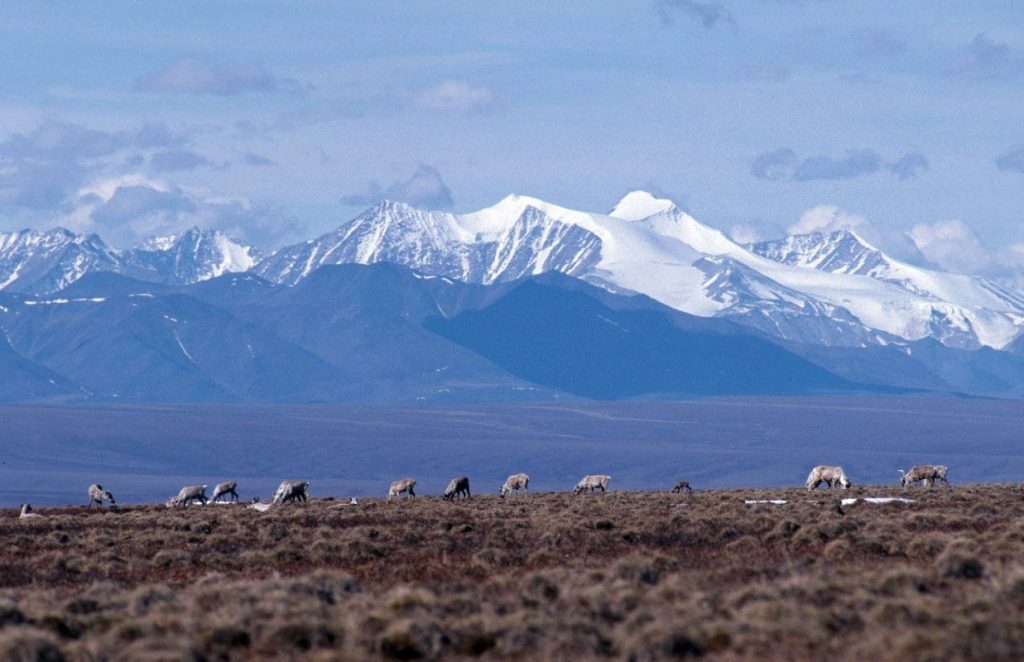With draft environmental study done, Trump administration hopes for Arctic refuge lease sale soon
A draft environmental impact statement means the Interior department is on track for a 2019 lease sale in the Arctic National Wildlife refuge.

The Trump administration is on track to auction off oil drilling rights next year in the Arctic National Wildlife Refuge, and a key milestone toward that goal has been reached, officials said.
The Bureau of Land Management has completed a draft environmental impact statement for oil leasing in the remote refuge, Joe Balash, assistant Department of the Interior secretary for lands and minerals management.
Balash made the announcement in a Wednesday teleconference, but that information and a news release about the draft EIS were embargoed until Thursday.
The idea of oil development in the Arctic refuge, the largest wildlife refuge in the United States, is highly controversial, and Balash said he anticipates “robust” debate once the American public begins weighing in on the newly completed draft.
But he also expects keen interest from oil companies wanting to learn what lies beneath the refuge’s lands.
“There aren’t many places known on the planet where we have a high degree of confidence that there are hydrocarbons that haven’t been explored,” he said.
In the teleconference, Balash said the draft EIS will be announced in the Federal Register on Dec. 28, kicking off a 45-day public review, Balash said. After that, there will be a final EIS and a formal solicitation asking companies for suggestions on areas that should be offered for lease, he said.
The department will then make decisions about how and when the lease sale will proceed, and the entire process is expected to meet the Trump administration’s one-year target, he said.
“Yes, 2019 is when we intend to have a lease sale,” he said.
Whatever date is chosen, there is no doubt that there will be a sale because the tax overhaul passed by Congress a year ago requires it, Balash said.
Although the draft report will include a “no-action” alternative for keeping the refuge protected from oil development, that is just a formality, he said.
“There is, for baseline purposes, a no-action alternative. But realistically, Congress has told us to have this sale,” he said.
Balash said the draft EIS includes protections for the Porcupine caribou herd that roams through that part of Alaska and neighboring parts of Canada. Opponents of refuge drilling cite potential for disturbances to that international herd of caribou; the region targeted for oil development is the same one where the herd gathers each year to give birth and raise new calves.
“We have a range of alternatives in the draft, four of them. And all of those alternatives have some degree of protection, whether it’s timing limitations on surface activity, no surface occupancy in the area, or in a couple of cases, the acreage itself in that primary calving habitat is not available for leasing at all,” Balash said.
Environmentalists criticized the Trump administration’s moves as rushed and likely illegal.
Jamie Rappaport Clarke, who served as director of the Fish and Wildlife Service in the Clinton administration and is now president of Defenders of Wildlife, vowed a legal fight.
“The administration’s Arctic Refuge leasing plan ignores science, turns a deaf ear to public opinion, attempts to skirt the law and paper over a disastrous decision that has already been made,” she said in a statement.
“We will see this administration in court soon for its reckless efforts to turn this iconic landscape into an industrial oilfield.”
“There is simply no precedent for such a rushed, inadequate review of the impacts of oil and gas development in Arctic wilderness. BLM is relying on outdated and incomplete science to make its decision, a reckless approach that is flat out negligent when making a critical decision about whether oil and gas development should occur in one of the world’s most exceptional ecosystems,” Adam Kolton, executive director of the Alaska Wilderness League, said in a statement.
“This is a land grab, pure and simple, and the individuals responsible care little about impacts to wildlife or the damage they would be inflicting on Alaska Native people whose subsistence depends on the Arctic Refuge.”
With the draft EIS about to come out, another important regulatory milestone is imminent, Balash said. Companies seeking to conduct seismic surveys in the refuge’s coastal plain are waiting for one last key permit, he said — an authorization from the U.S. Fish and Wildlife Service to disturb polar bears. That “incidental harassment” authorization would SAExploration Inc. and the two Native corporations that are its partners to “take” polar bears, a definition that includes everything from small disturbances to fatal injuries.
The proposal from SAExploration, the Kaktovik Inupiat Corp. and the Arctic Slope Regional Corp. is to shoot 3-D seismic lines over the coastal plain starting as early as this winter.
Balash said that seismic exploration will do much to improve the understanding of the resources lying beneath the coastal plain’s surface. The last seismic work was done long ago with less-sophisticated 2-D technology, he said. And information from the single well that was drilled in the 1980s on Native land within the refuge boundaries has been a tightly held secret, he said.
Yereth Rosen is a 2018 Alicia Patterson Foundation fellow.
This story has been updated to include responses from environmental groups fighting the move.